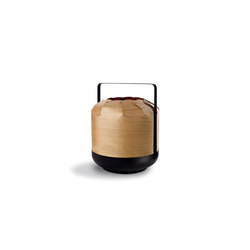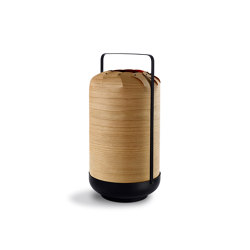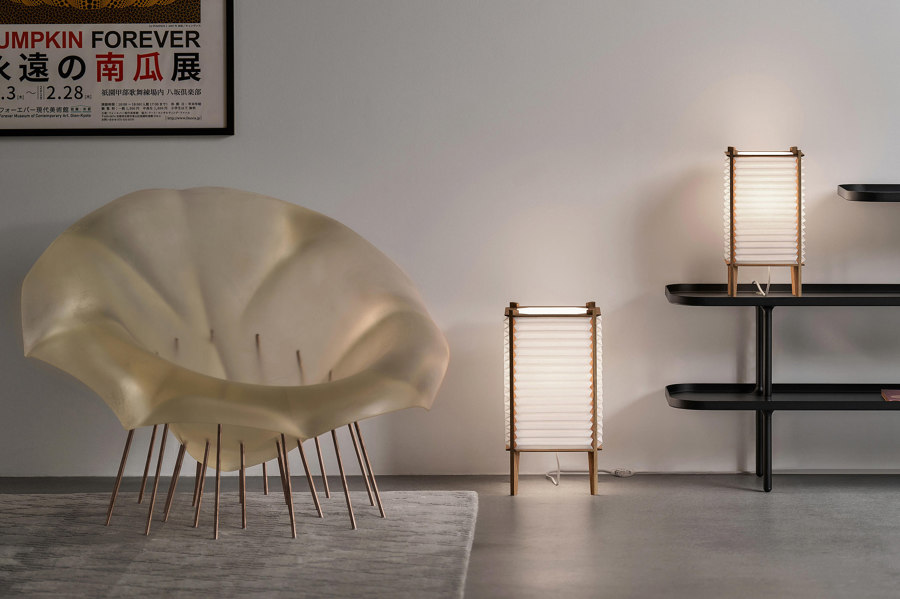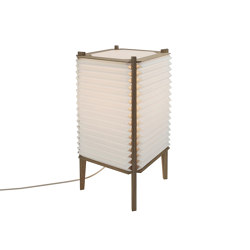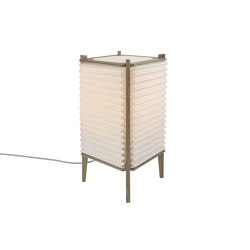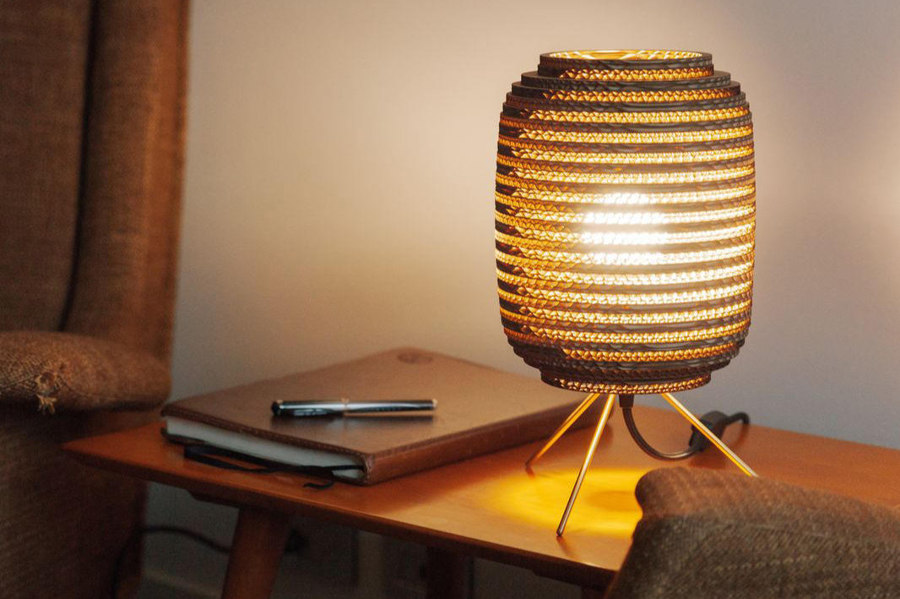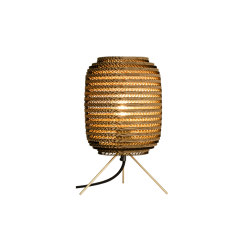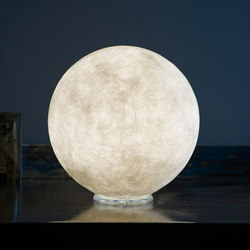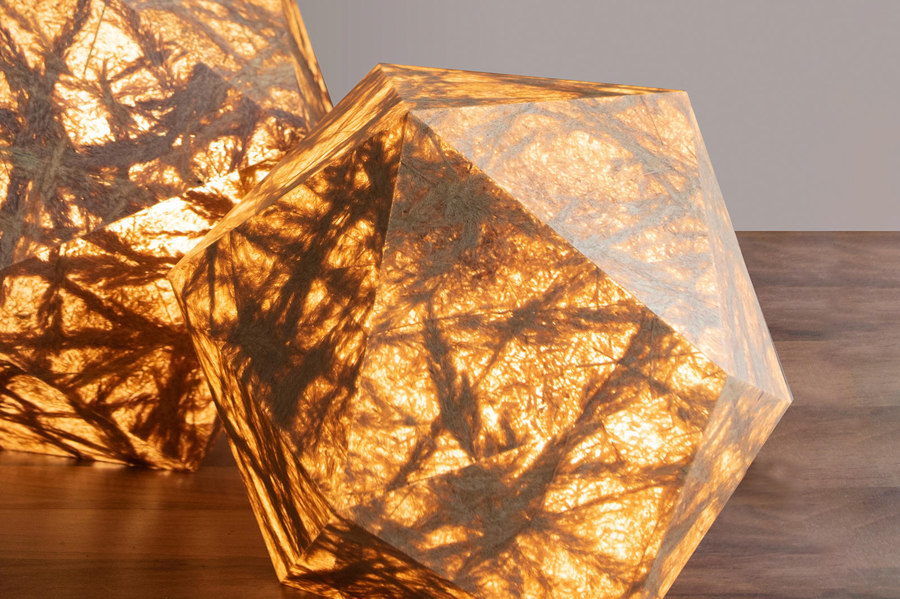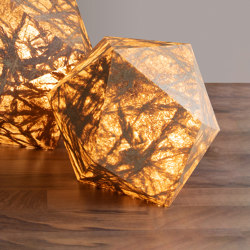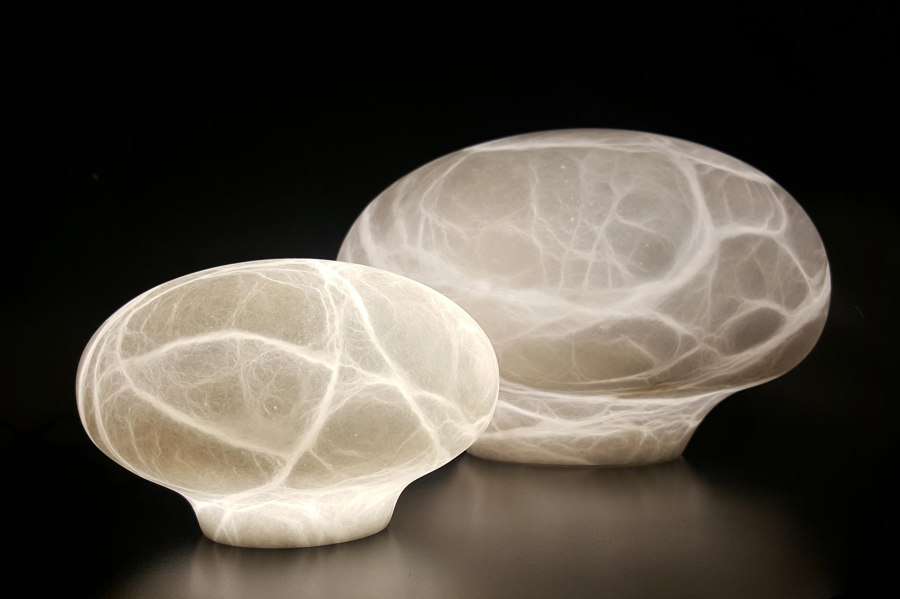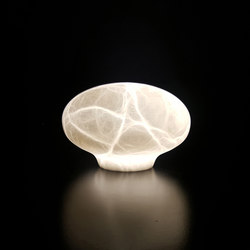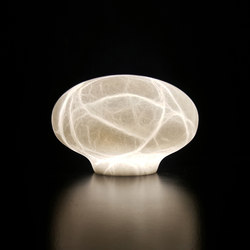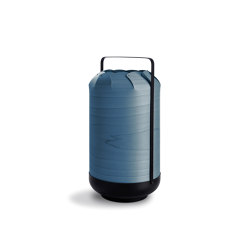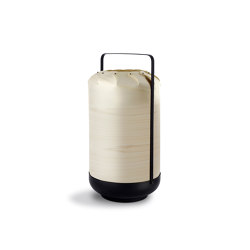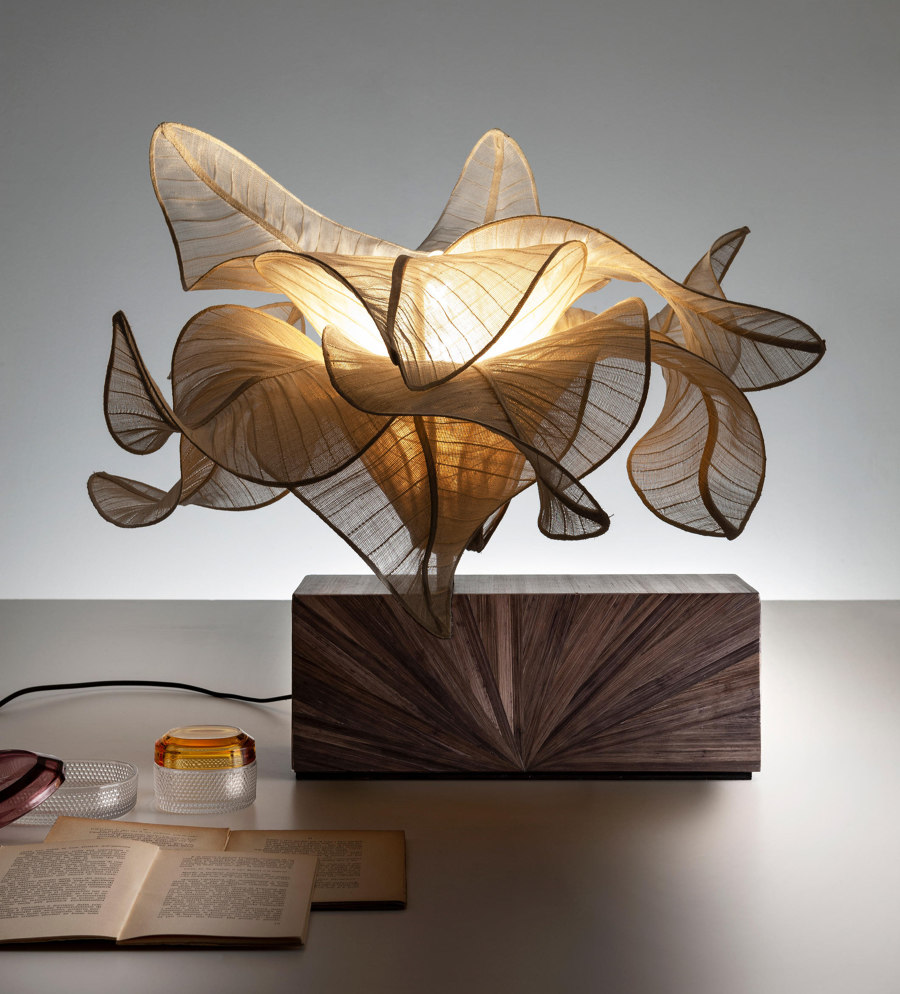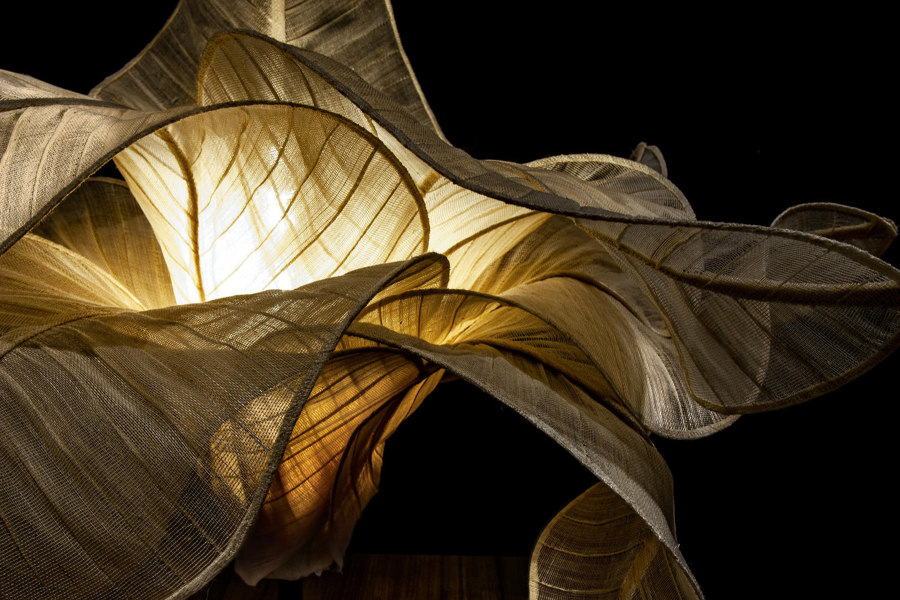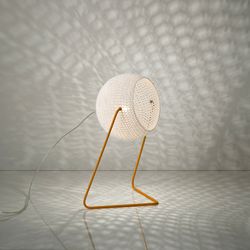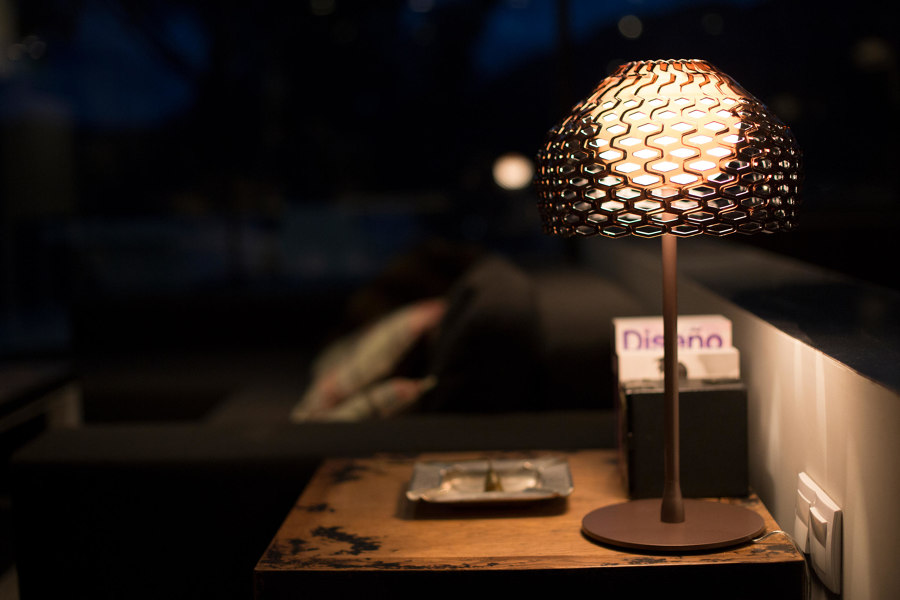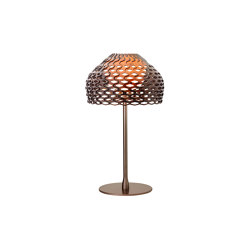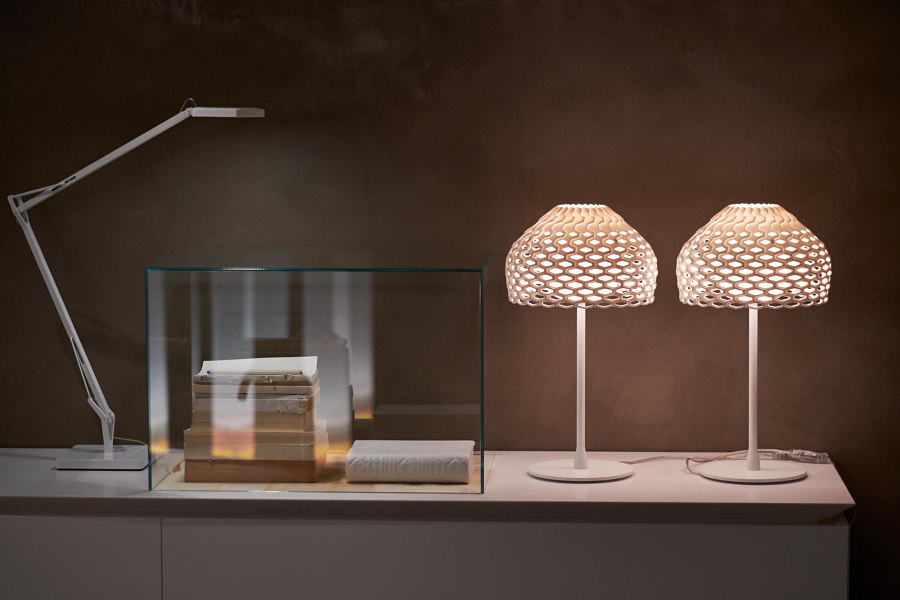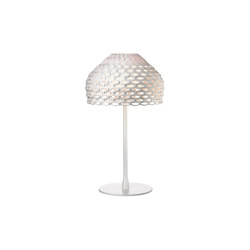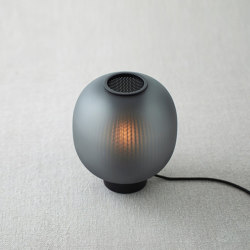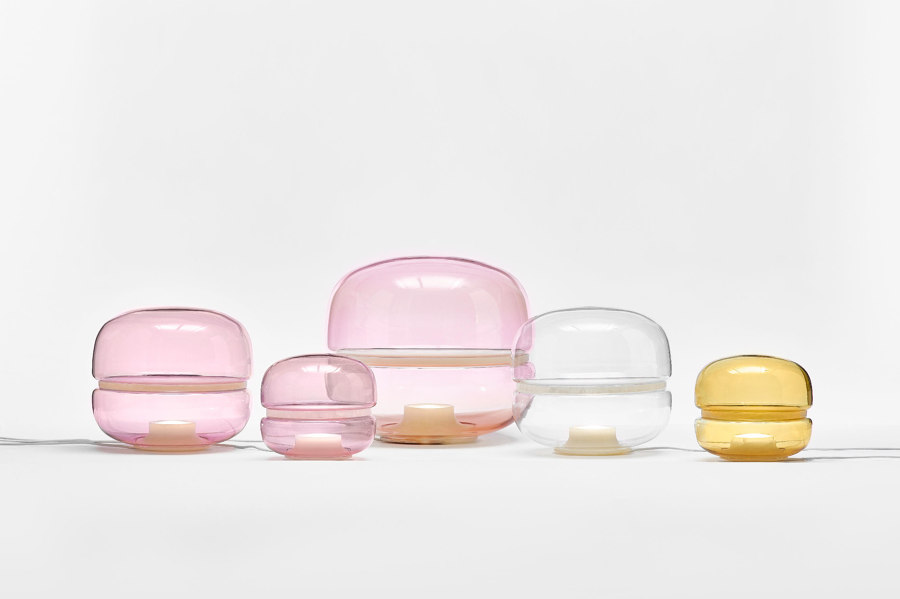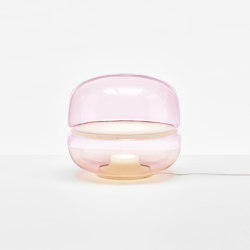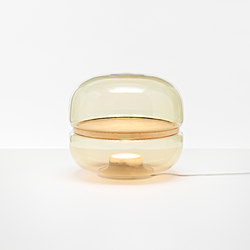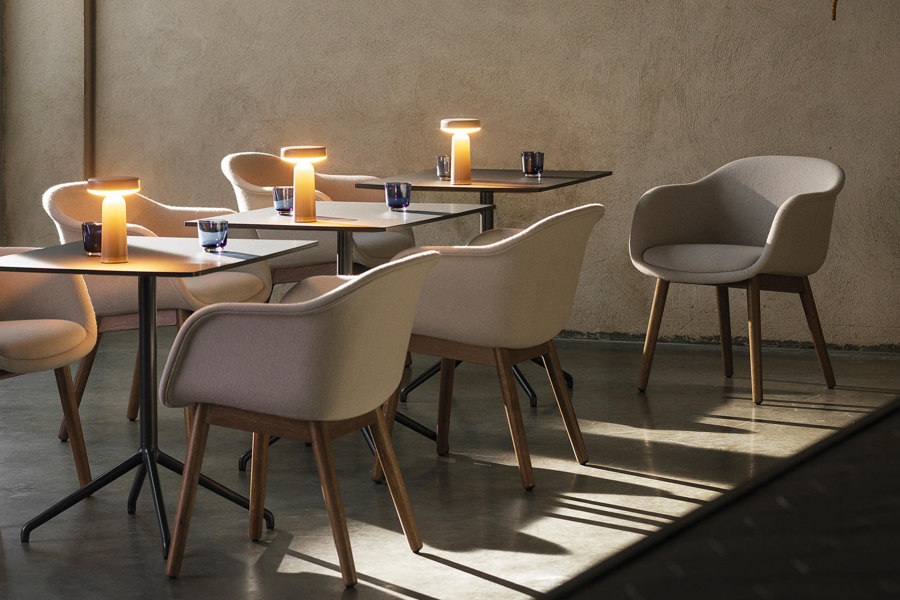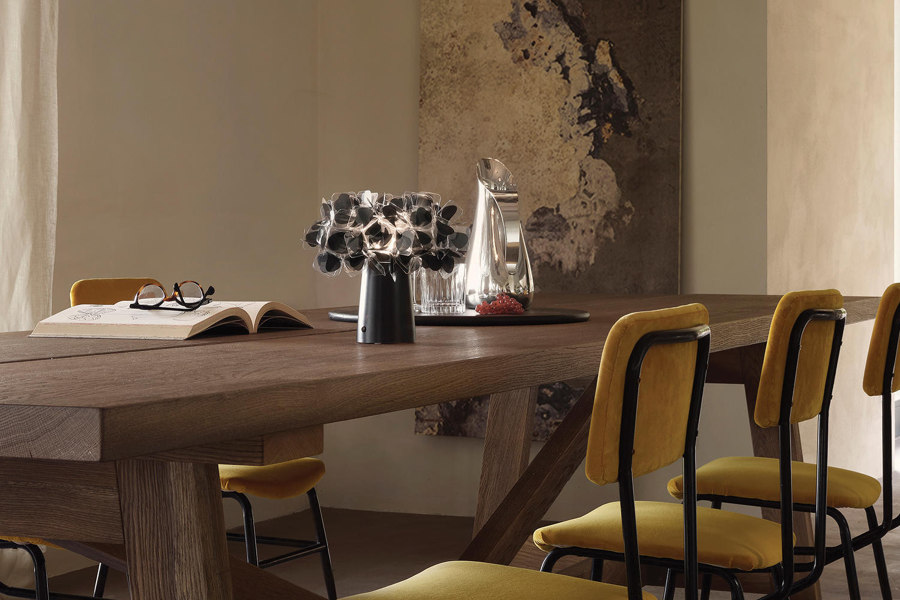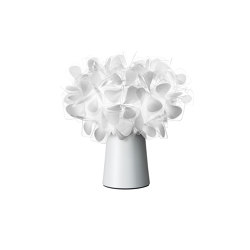Let it glow: diffused table lamps that cosify the dark
Texte par James Wormald
04.12.23
With soft, ambient lighting positioned in the corners of a room, the diffused and patterned glow from these selected table lamps brings the cosy warmth we need for winter hibernation.
The Chou lantern lamp from lzf uses the translucency of thin natural veneer to provide a warming, fire-like glow through the wood’s natural grain
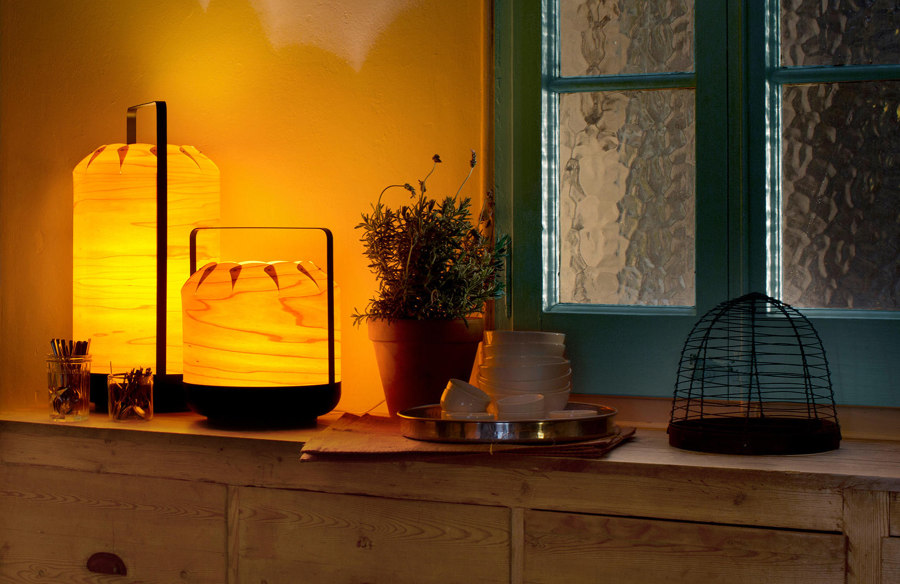
The Chou lantern lamp from lzf uses the translucency of thin natural veneer to provide a warming, fire-like glow through the wood’s natural grain
×While our contemporary home heating systems are able to sustain a comfortable temperature with efficient ease, as winter takes its toll and the mercury hits rock bottom, we’re still hardwired to find comfort in a warm nest. When positioned at the perfect height to be seen but not noticed, diffused ambient lighting warms up our senses like the gentle glow of a crackling fire. By using different translucent materials and employing layering, moulding or positioning techniques, these soft, diffused table lamps, handpicked from the Architonic catalogue, have the ability to warm up our caves and get us through until spring.
The architectural BeeHive lamp (top) from LE KLINT, Ausi lamp (middle) from Graypants and Laurameroni’s Novecentotrenta lamp (bottom) use translucent paper and parchment shades
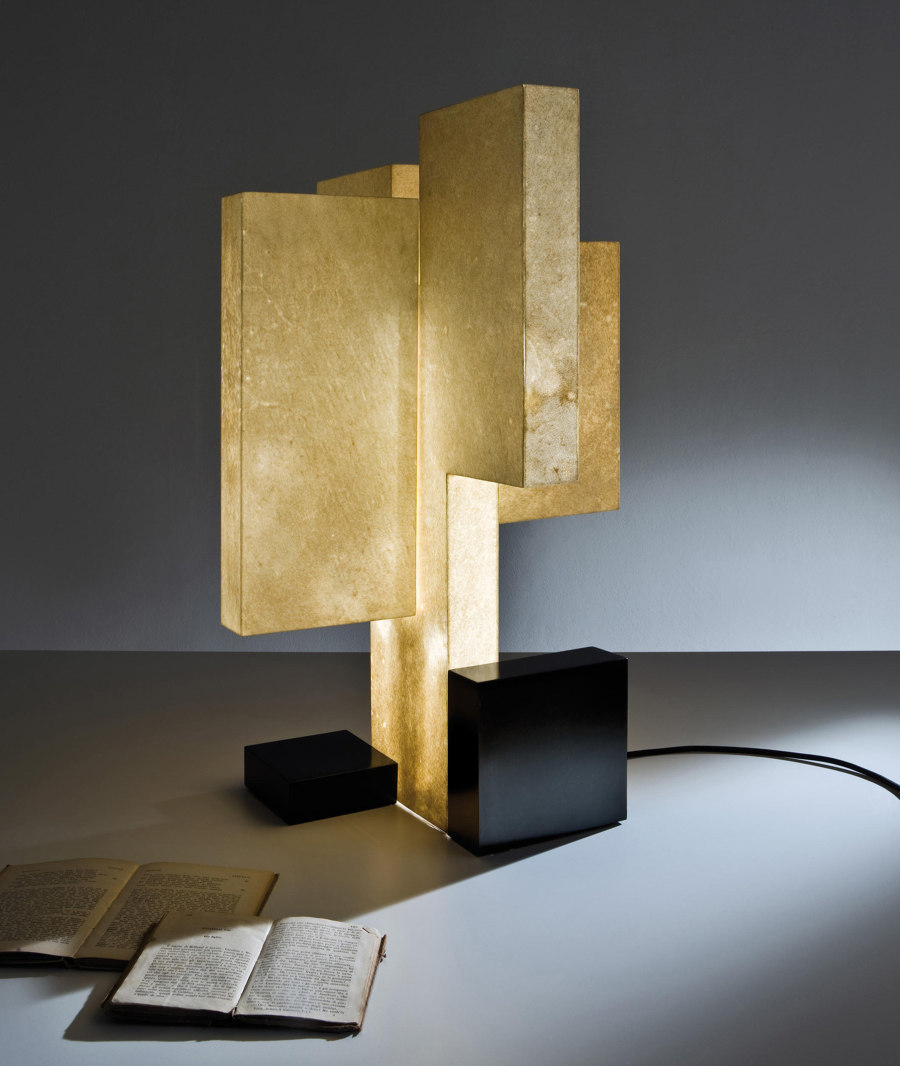
The architectural BeeHive lamp (top) from LE KLINT, Ausi lamp (middle) from Graypants and Laurameroni’s Novecentotrenta lamp (bottom) use translucent paper and parchment shades
×Paper lanterns
With variable translucency based on its thickness, paper makes an excellent material for diffusing interior lights. The ability to neatly cut, fold, pleat and press paper also makes it an easy material for designers to work with. The BeeHive light from LE KLINT, for example, is a refined architectural take on the traditional square paper lantern. Elsewhere, Graypants’ Ausi table lamp uses the intricate form pre-existent in reused cardboard to filter light and Laurameroni’s Novecentotrenta lamp takes advantage of the natural texture of goat parchment.
in-es.artdesign uses the specially-developed resin Nebulite® to create fibrous shadows and highlights on the T.moon lamp’s surface, lighting up the lunar apparition
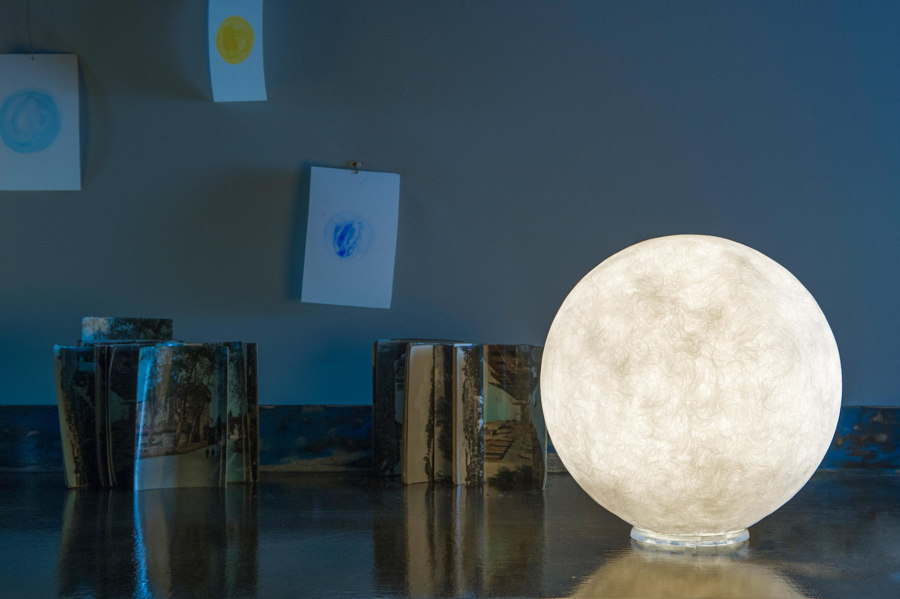
in-es.artdesign uses the specially-developed resin Nebulite® to create fibrous shadows and highlights on the T.moon lamp’s surface, lighting up the lunar apparition
×Creating texture in light with shadow and reflection
The patterning created by Novecentrotrenta’s goat parchment shade gives the lamp a look of natural stone. In order to create a similar effect, in-es.artdesign uses a resin of their own design called Nebulite® to cover the spherical T.moon table lamp with fibrous shadows, imitating the celestial object. Also using shadows on its shade, LE KLINT’s vorticose Swirl light curves spirals of light and darkness on its surface and Kartell’s Planet table lamp creates glinting glamour with a ‘tapestry of reflections’, as its manufacturers suggest.
Using folded bioplastic, turned alabaster and bent natural veneer, the Hedron (top), Fuwas (middle) and Chou (bottom) lamps respectively look for translucency in uncommon places
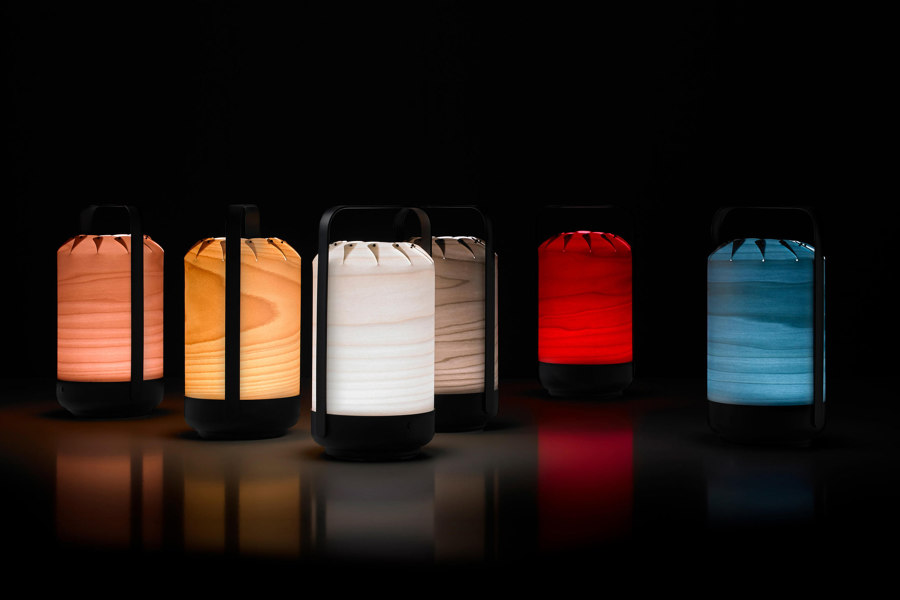
Using folded bioplastic, turned alabaster and bent natural veneer, the Hedron (top), Fuwas (middle) and Chou (bottom) lamps respectively look for translucency in uncommon places
×Using biology and geology to form innovative materials
Being both rigidly ordered and mathematical as well as wildly creative and unpredictable, the natural world is the perfect place to find materials with organic patterns for diffused light. Made from bioplastic, for example, Viaplant’s Hedron lamp creates visualisations of nature’s artistic accomplishments. Looking elsewhere in the periodic table, the Fuwas lamp from Hands on Design uses translucent alabaster and lzf combines the slender form and patterning of natural veneer to surround the Chou lantern with pattern and form.
The tight weave of the Aurizia lamp’s curved petals (top, middle) filter out its light, whilst the loose weave of the Trama lamp’s shade (bottom) projects its pattern onto nearby surfaces

The tight weave of the Aurizia lamp’s curved petals (top, middle) filter out its light, whilst the loose weave of the Trama lamp’s shade (bottom) projects its pattern onto nearby surfaces
×Woven fabric lampshades
Designers of fabric-shaded lamps are able to determine the exact level of translucency they want by adjusting the tightness of the fabric’s weave. Used in Laurameroni’s Aurizia lamp, for example, the shade’s tightly woven Banaca fabric ‘leaves’ – held firm with rye straw supports – can curve over themselves to form a floral arrangement. However, with a looser weave, such as that used for the shade of in-es.design’s Trama light, intricate repetitive patterns can be projected onto nearby surfaces and objects.
Both the Tatou light from Flos (top, middle) and the Bloom light from Resident (bottom) double up on diffusion by combining one frosted shade with another perforated one
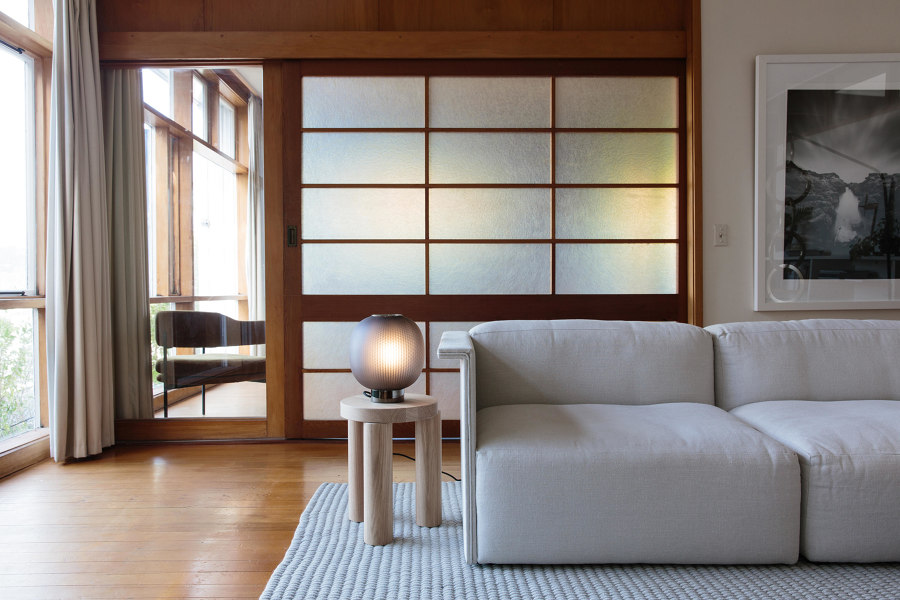
Both the Tatou light from Flos (top, middle) and the Bloom light from Resident (bottom) double up on diffusion by combining one frosted shade with another perforated one
×Lamps that double up on diffusion
While some lamps offer diffusion by raising the opacity of the shade or the bulb itself, and others project patterns on adjacent surfaces with perforated or woven shades, by layering both techniques, some achieve pattern and glow. Flos’ Tatou light, for example, designed by Patricia Urquiola, hides a diffused light source behind a 3D-printed external diffuser, adding pattern to the shade but not the wall behind. Meanwhile, by switching things around and wrapping frosted blown glass around a perforated mesh core, Resident’s Bloom light softens the glow and the pattern emanating from its surface.
With dimple curves and pastel colours, the Macaron lamp (top, middle) is as sweet as its confectionary namesake whilst Tom Dixon’s Melt lamp (bottom) resembles an orb of molten lava
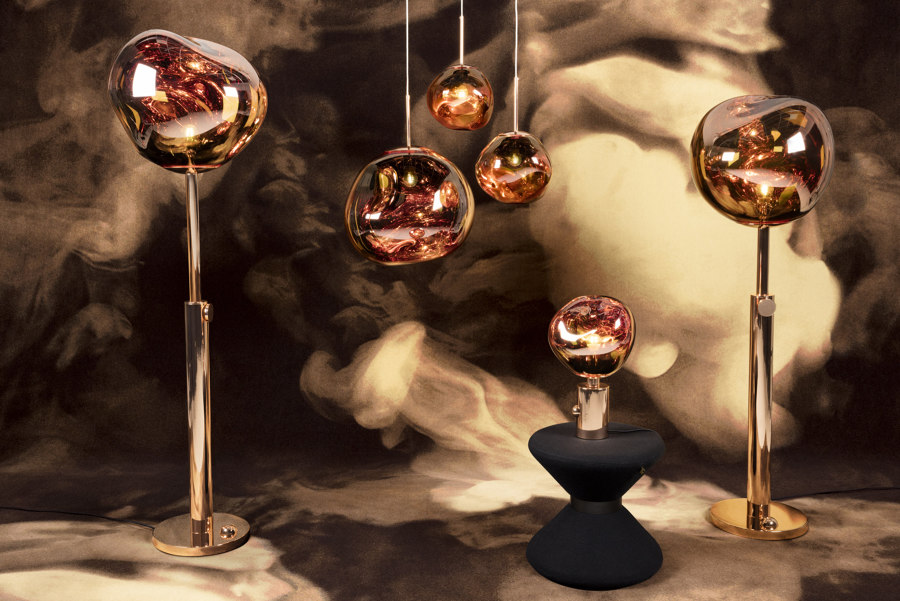
With dimple curves and pastel colours, the Macaron lamp (top, middle) is as sweet as its confectionary namesake whilst Tom Dixon’s Melt lamp (bottom) resembles an orb of molten lava
×Glass lamps that glow with colour and warmth
While adding colour to many materials might come at the sacrifice of translucency, glass can be coloured early on in the production process and blown or moulded into any desired shape and arrangement, resulting in retained translucency along with a built-in warmth provided by the colour itself. The pastel pink or amber hues of the Macaron lights from Brokis, for example, designed by Lucie Koldova, help the objects reach the sweetness of their namesake. Meanwhile, Tom Dixon’s Melt light uses the natural form of molten glass to fill the object – reminiscent of inner Earth or deep space – with mesmerising distortion.
Moveable wireless lamps like Ease (top) from Muuto or a Clizia Battery bouquet (middle, bottom) from Slamp, bring the beauty, romance and freedom of a candle to tables inside and out
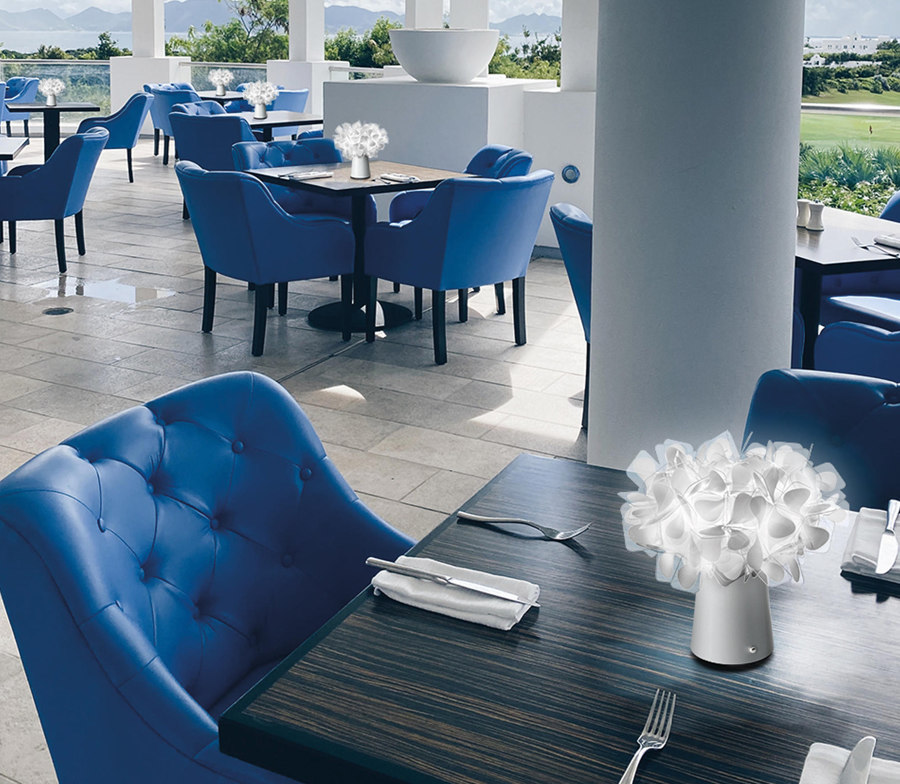
Moveable wireless lamps like Ease (top) from Muuto or a Clizia Battery bouquet (middle, bottom) from Slamp, bring the beauty, romance and freedom of a candle to tables inside and out
×Free-roaming wireless lights to take with you
The rise of outdoor living spaces means nearby power sources can be hard to find, and the warmth of a soft-hued table light is not always possible. This is why wireless table lights you can recharge and place anywhere are also growing in popularity. Muuto’s portable Ease lamp, for example, applies one of three intensity levels of diffused downlight wherever it’s placed, giving users the light they need without distracting other users. Meanwhile, by mimicking other moveable objects and light sources, Slamp’s Clizia Battery lamp brings both the light of a candle and the beauty of a floral centrepiece to a romantic evening, indoor or out.
© Architonic
Head to the Architonic Magazine for more insights on the latest products, trends and practices in architecture and design.

